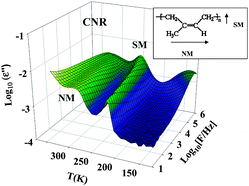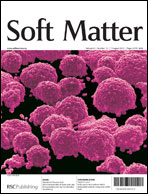In order to understand the molecular dynamics of natural rubber, the dielectric relaxation behavior of its different components were investigated. These components included: (1) the linear polyisoprene fraction, obtained after deproteinization and transesterification of natural rubber (TE–DPNR), (2) the gel (GEL) fraction, corresponding to pure natural chain–end cross–linked natural rubber, (3) deproteinized natural rubber (DPNR), in which the protein cross–links at the ω–end have been removed, and (4) natural rubber (CNR) purified (through centrifugation) but still containing proteins, phospholipids and the sol phases. The dielectric relaxation behaviour of natural rubber revealed a segmental mode (SM) which is not affected by natural chain-end cross-linking (so-called naturally occurring network) and a normal mode (NM) which depends on a naturally occurring network. The dynamics of the NM, which is associated to chain mobility, seems to be strongly affected by natural chain-end cross-linking. We propose a model based on a hybrid star polymer in which the low mobility core (phospholipids) controls the mobility of the polyisoprene arms.

You have access to this article
 Please wait while we load your content...
Something went wrong. Try again?
Please wait while we load your content...
Something went wrong. Try again?


 Please wait while we load your content...
Please wait while we load your content...